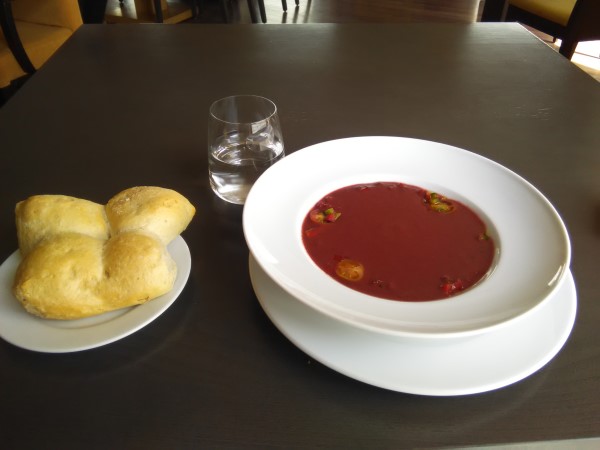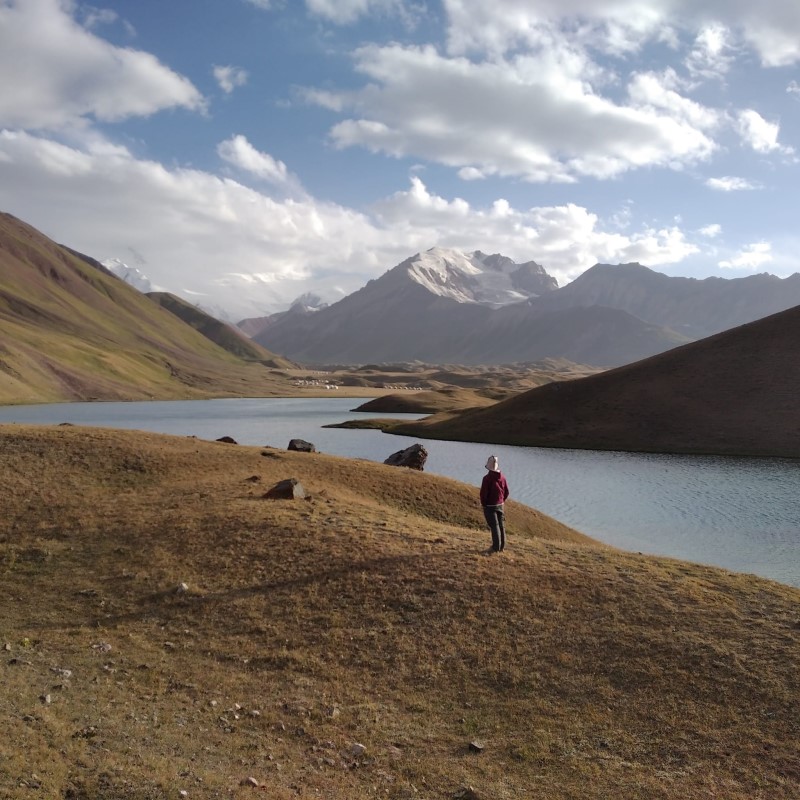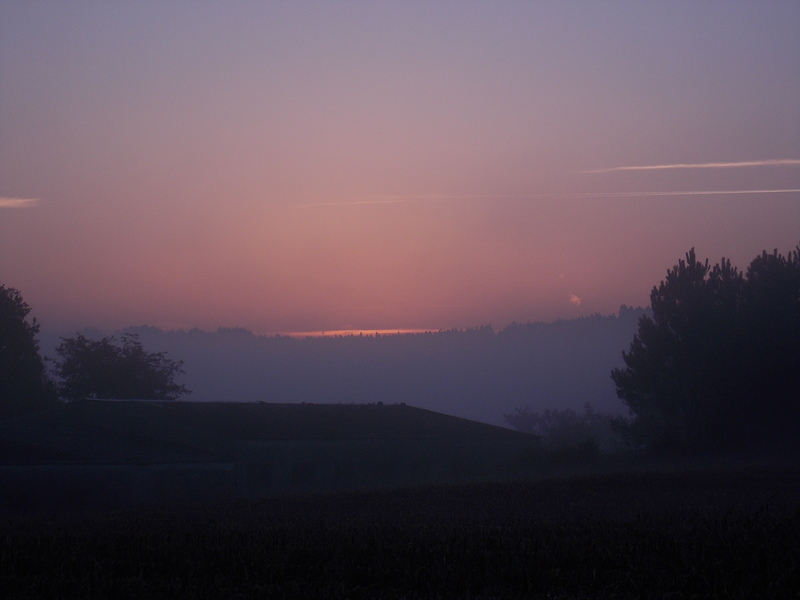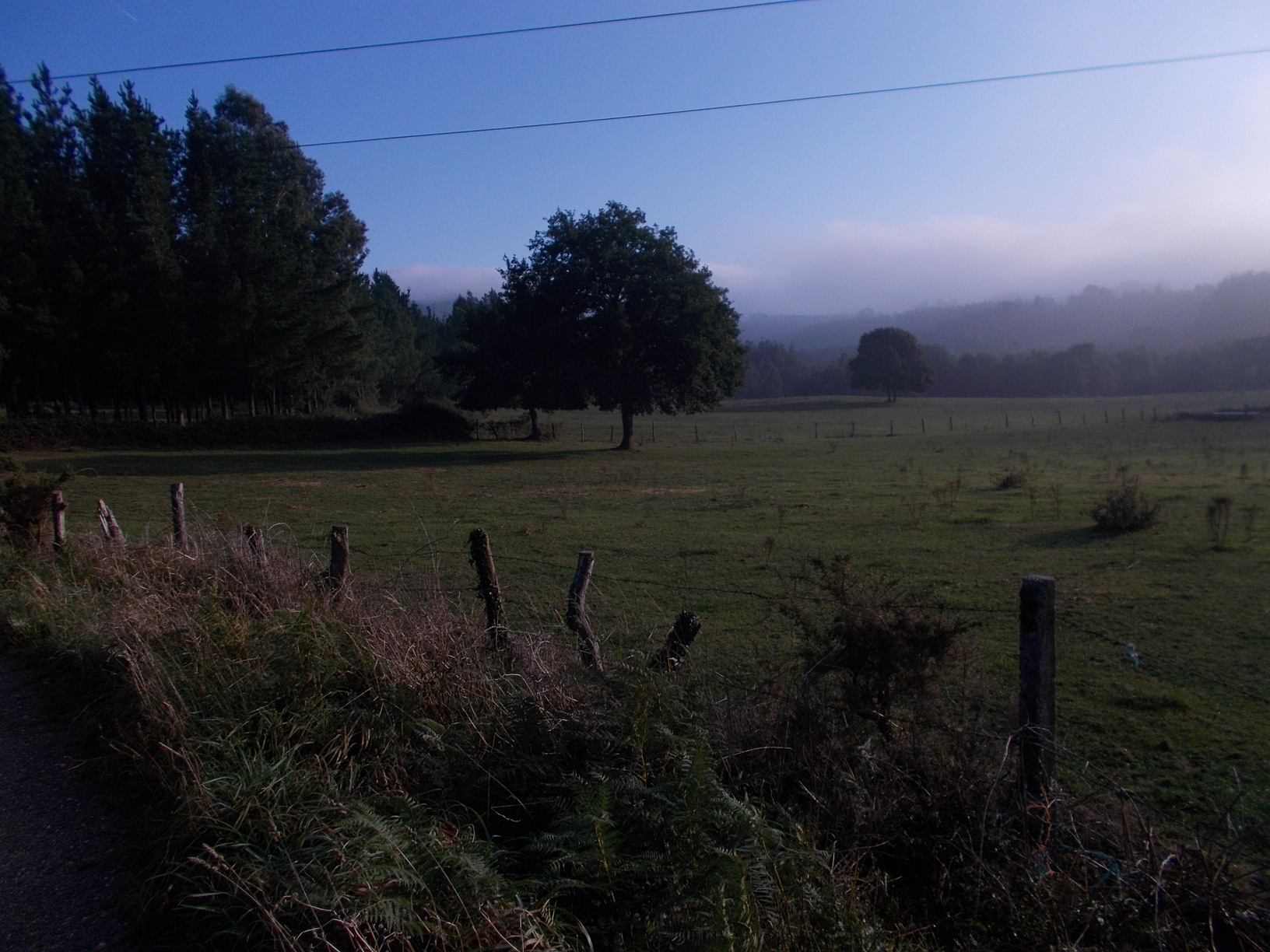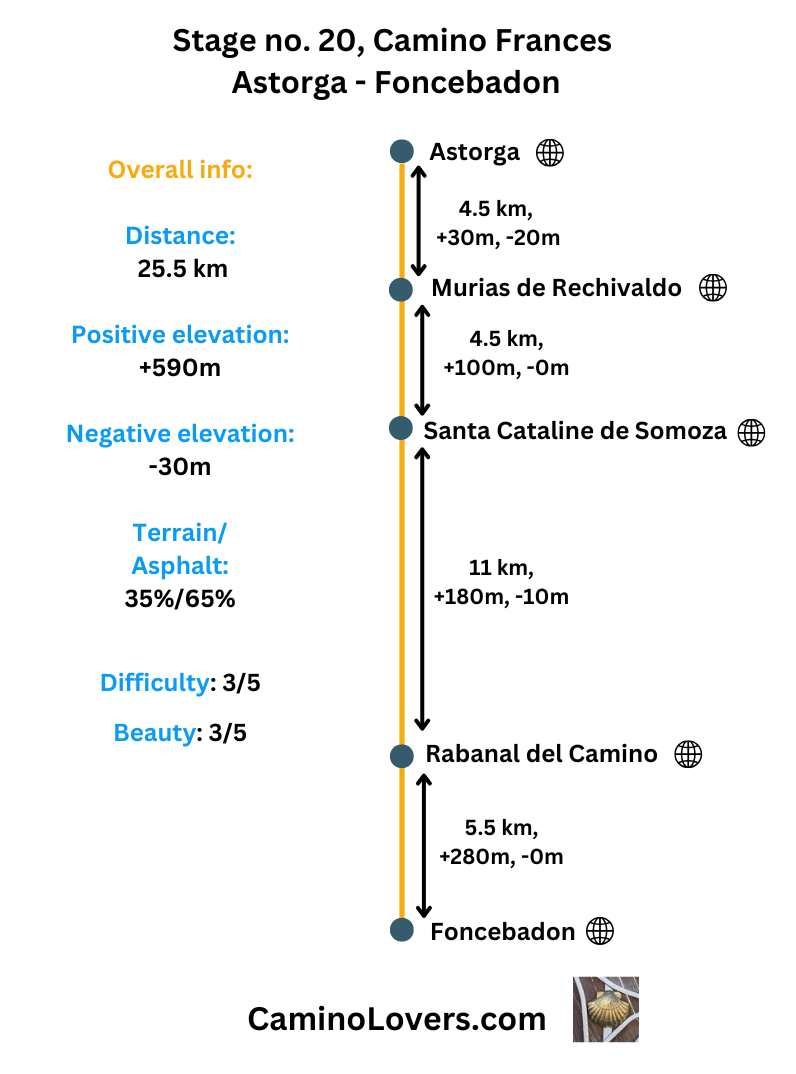
Basic Information
- Starting Point: Astorga, Spain – A historic crossroads town with Roman roots and Gaudi architecture, with an elevation of 870 m above sea level. Highlights include Gaudi palace, beautiful cathedral, and chocolate factory and museum :). The town has over 10,000 inhabitants, and you’ll find in town all services for pilgrims, including four pilgrim albergues.
- Ending Point: Foncebadón, Spain – A mountain ghost town revived by pilgrims at 1,430 m above sea level. There virtually aren’t any people living in town, except of people who run the infrastructure for pilgrims (albergues, restaurants, shops, etc). The town has its specific atmosphere, and though it can feel almost a bit touristic now, it still has its charm.
- Availability of an alternative road: Not really. There is just a small variation allowing you to visit one extra village, Castrillo de los Polvazares, but there are enough services and bars on the regular road, and in my opinion the village isn’t special in a way that would justify this detour. It was probably just a political decision to put the way here, so also this village can make some money from the camino.
- Distance: 25.5 km (Download GPS here).
- Online Map: Map.
- Elevation Difference: +590 m ascent, -30 m descent (basically all climbing, finally after the flats)
- Difficulty Score: 3/5 – The climb is long but steady, if hills are not your friends the difficulty can be 4/5, but not more.
- Beauty Score: 3/5 – We’re just entering the mountains, the really nice stage with 5/5 score will come only tomorrow :).
- Terrain/Asphalt Walking Ratio: 35% dirt trails, 65% asphalt/on the road, or right next to the road.
- Next stage: Camino Frances Stage no. 21, Foncebadon – Ponferada.
- Previous stage: Camino Frances Stage no. 19, San Martin del Camino – Astorga.
Elevation profile for the route

– As you can see, today’s stage is one long uphill… However, it is rather gradual, with climb gradient rarely surpassing 6%. As hard as it may seem for someone with little hiking experience, climbing 600 meters on 25 kilometers isn’t anything one should be afraid of :).
Advanced Info About the Stage
- Trail Marking: Excellent. No sudden direction changes, and you always stay close to the road, simply walking in the north-west direction all day long. It is almost impossible to get lost on this stage.
- Natural Highlights: After spending so much time on the Meseta, in a way entire second half of today’s stage is a natural highlight 🙂. Colorful shrubs and flowers (something is blooming here all the way from April to early October) and nice trees will accompany you for a good part of today’s walk. Basically the closer to Foncebadon you get, the nicer the nature gets. Of course, one can feel global warming even here. When I came back to this stage 8 years after initially walking it in 2014, I couldn’t believe how drier the entire zone was. But it is still beautiful, and enjoyable walking through.
- Historical & Cultural Highlights:
- Artist Mateo and his wax stamps. One can make a living on Camino Frances in different ways. Creative artists like Mateo, who simply sits on the route with his dog, showcasing his beautiful wax stamps, makes more money daily than most people in Spain do working. The wax stamps are beautiful, and the entire thing work on a base of voluntary donations. Almost everyone stops here for a stamp. Imagine that just 100 pilgrims stop there on a day. Each donates 1 euro. You can do the Math :). Anyway, it is an interesting place that tells a lot about the Camino Frances as it is today. Location on Google maps here.
- Iglesia de Nuestra Senora de Asuncion, Rabanal del Camino. A beautiful church from 12th century, many areas are preserved from the original construction. The entire place breaths humility, one of the values of true Christianity. There is an evening mass at 7pm daily, run by Benedictine monks, should you sleep for the night in Rabanal. Location and reviews on Google maps here.
- Foncebadon. A mountain village that was almost completely abandoned in 1990 (with two inhabitants only, mother and son) brought back to life by pilgrims (in the Middle Age it was an important stop on the Camino with a hospital and a church). On one hand, it is an interesting place with a special charm. On the other, the Foncebadon of today has nothing to do with the Foncebadon of the past… for many people living there today, it is simply a money making machine. Similarly to the artist with wax stamps I mentioned before, the Foncebadon of today tells a lot about what Camino Frances has become over the last 15 years. One pilgrim I met in our albergue said it nicely: “The French camino is a victim of its own success“.
- Camping/Bivouac Options: There isn’t any working official camping place on today’s stage. While there are two on maps, one is virtually abandoned, and the another one serves more as a bar than as a camping, and has really bad reviews. Hence I am not going to suggest any of the two. Wild camping and bivouac may seem easy in the mountains, but there are a couple of things to mention: First one, lot of private property, shrubs and bushes, simply not good spots to pitch a tent. Secondly, you are in the mountains, and certainly some storm can surprise you at night :). Hence if you have to stay outside, I would recommend the following pilgrim rest area, three km before Foncebadon, where is a place where you can put your sleeping bag under protected roof, and have at least some protection from the elements. I have seen some people camping next to Cruz de Fiero as well, so you can give it a shot too (more on this place in the description of the next stage, since it is located after Foncebadon).
- Dog-Friendly Score: 3/5. Things are improving for the dogs. However, you should not expect the mountains you walk into to provide a lot of shade–it isn’t that type of vegetation, although there are some sections with trees big enough to offer a minute of relief from the scorching Spanish sun. In terms of accommodation, albergues in Foncebadon aren’t dog friendly. You can either stay in El Ganso (km 13), in a very interesting albergue called Indian Way (location and reviews on Google maps here), or try your luck with camping (read the Camping/bivouac options section above).
- Special Remarks: None.
My accommodation picks for this stage
- Albergue Gabino, El Ganso (km 13). A beautiful albergue with a peaceful garden, nice communal space both inside and outside of the house, well-equipped kitchen, and truly welcoming hosts. 13 euro/night, 24 beds, breakfast is donation-based. You can make a reservation on the following phone number +34 660 912 823, or on Booking, where you can see also all the photos and reviews, exactly here.
- Refugio Gaucelmo, Rabanal del Camino (km 20): Run by English volunteers, in an English style. Tee and cookies at 5 pm, great opportunity to get to know other pilgrims :). Very clean and well-organized, 10 meters from a church, with a beautiful garden. You won’t stay in many better albergues than this one on Camino Frances... Check in from 12:30, they do not accept reservations. 36 beds in three rooms. Location and reviews on Google maps here.
- Albergue Monte Irago, Foncebadón (km 25.5): There isn’t any superb albergue in Foncebadon (or some that is special in some means). If I have to pick one place, however, I’d go with Monte Irago. It is a nice place with a lot of tradition, and communal dinner with all pilgrims. Price 25 euro/night, dinner included (you cannot opt out). 14 beds, bar, some benches to sit on outside. Location and reviews on Google maps here.
- Hostal El Trasgu de Foncebadon, Foncebadon (km 25.5): If you’re looking for some privacy after this difficult stage, this hostal is by far your best bet. Bar on site, massage service, sunny terrace, but also beautiful space inside. Caring hosts, speak perfectly English, everything is cleaned and well-maintained, while preserving the rustic character of the house. Prices from 50 euro/room, ideal for couples or groups of 3 or 4, check-in from 2pm. Excellent ratings across all platforms, you can see yourself and book it on Booking, exactly here.
Pictures from the stage
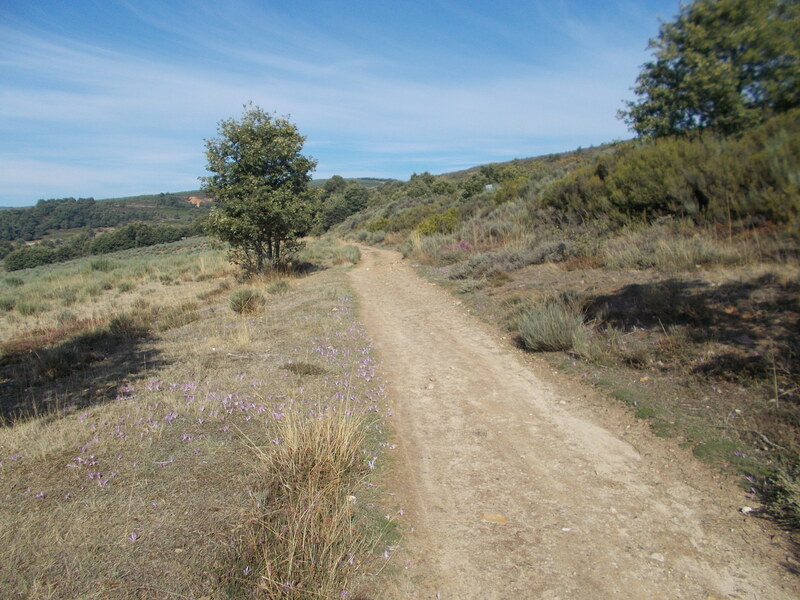 – Finally the landscape is changing, with more trees and bushes
– Finally the landscape is changing, with more trees and bushes
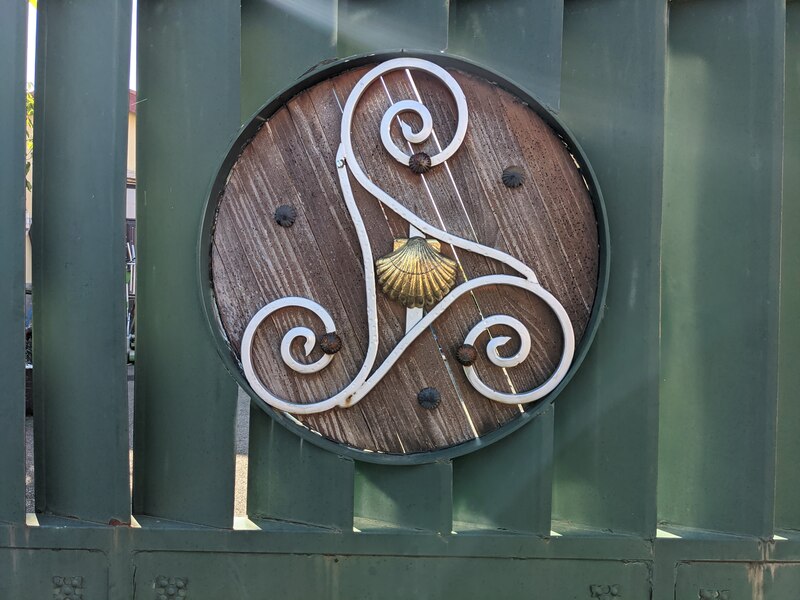 – I just loved this sign on the door in one of the villages
– I just loved this sign on the door in one of the villages
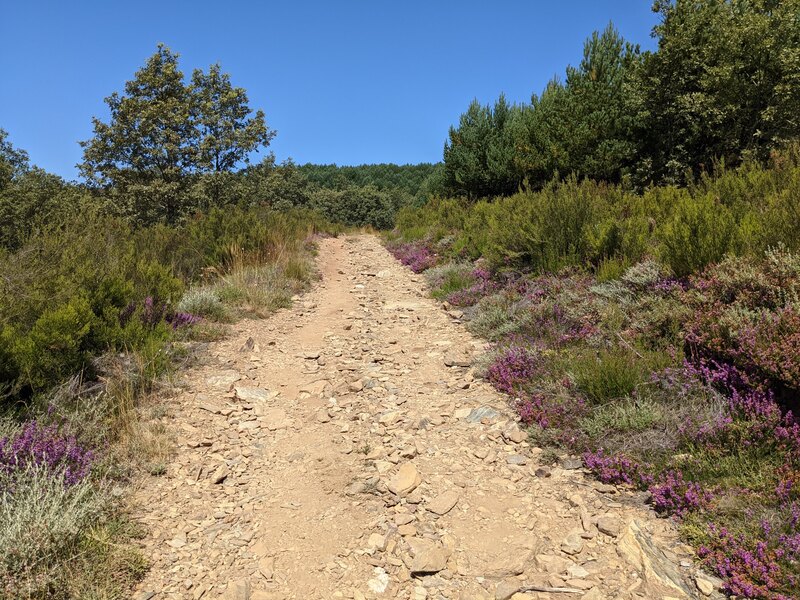 – The earth is dry, but the mountain bushes and flowers add beauty to the final stretches of today’s walk
– The earth is dry, but the mountain bushes and flowers add beauty to the final stretches of today’s walk
 – The beautiful village of Rabanal del Camino
– The beautiful village of Rabanal del Camino
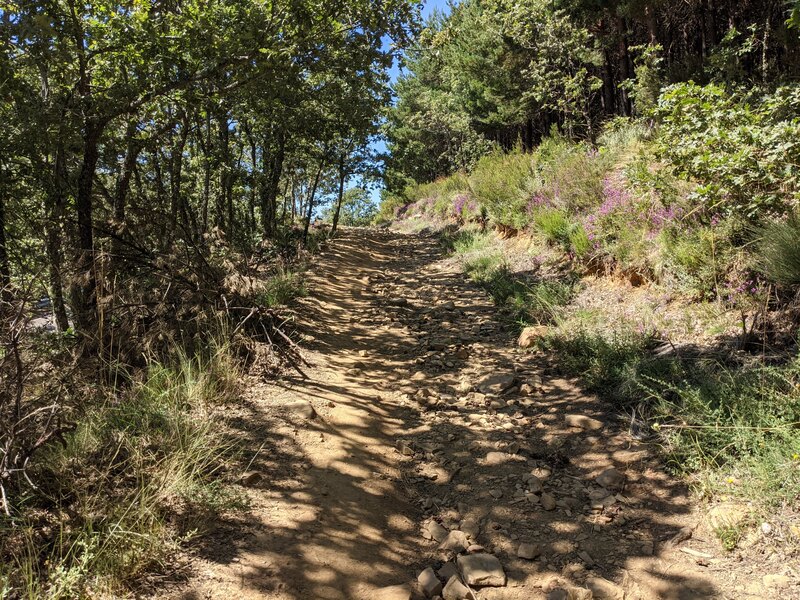 – Certain stretches of today’s way are just beautiful for the eye, especially after spending the last week walking on the Meseta.
– Certain stretches of today’s way are just beautiful for the eye, especially after spending the last week walking on the Meseta.
Few tips at the end
- Book albergue in Foncebadon in advance. If you want to stay in Foncebadon, you should definitely book your place in advance. It is a small place with limited capacity, and during the main season on Camino Frances (May-June, September-October), the number of people who want to stay there often exceeds the number of beds in a ratio of 3 to 1 or even 4 to 1. Normally that wouldn’t be a problem on the Camino–you’d simply walk a bit further, but in this case, the next place where you can realistically sleep is El Acebo, 12 kilometers after Foncebadon, walking in the mountains… This isn’t a stage to take such risks.
Next/Previous Stage
- Next stage: Camino Frances Stage no. 21, Foncebadon – Ponferada.
- Previous stage: Camino Frances Stage no. 19, San Martin del Camino – Astorga.
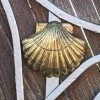


![Ultralight Packing List for Camino de Santiago [2025 Edition]](https://caminolovers.com/wp-content/uploads/2022/03/altra-shoes-640-x-480.jpg)
